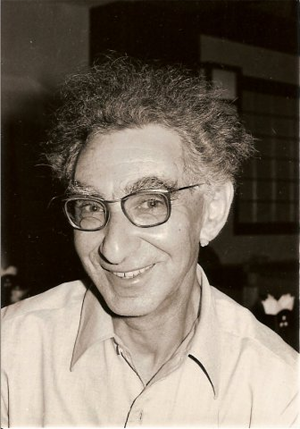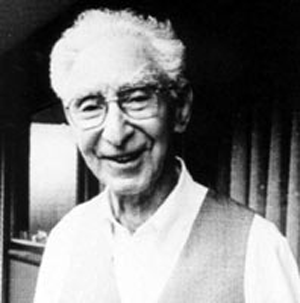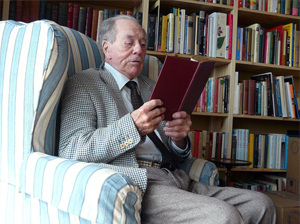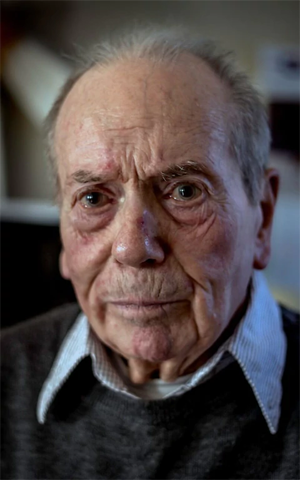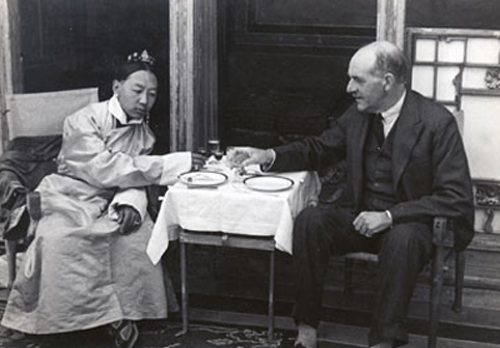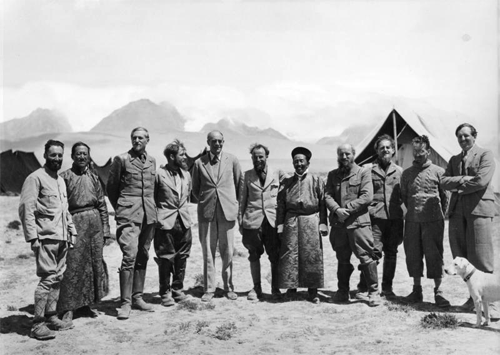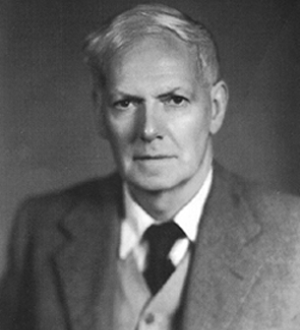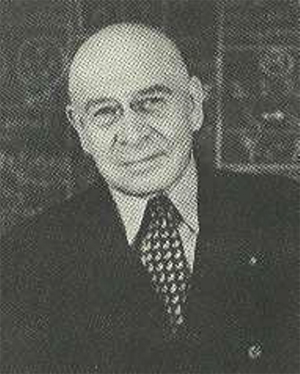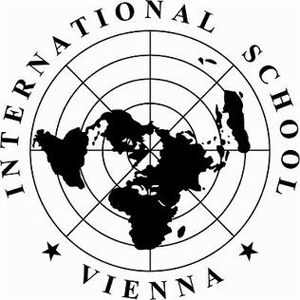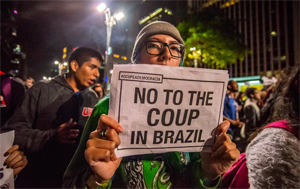by Wikipedia
Accessed: 8/6/19
NOTICE: THIS WORK MAY BE PROTECTED BY COPYRIGHT
YOU ARE REQUIRED TO READ THE COPYRIGHT NOTICE AT THIS LINK BEFORE YOU READ THE FOLLOWING WORK, THAT IS AVAILABLE SOLELY FOR PRIVATE STUDY, SCHOLARSHIP OR RESEARCH PURSUANT TO 17 U.S.C. SECTION 107 AND 108. IN THE EVENT THAT THE LIBRARY DETERMINES THAT UNLAWFUL COPYING OF THIS WORK HAS OCCURRED, THE LIBRARY HAS THE RIGHT TO BLOCK THE I.P. ADDRESS AT WHICH THE UNLAWFUL COPYING APPEARED TO HAVE OCCURRED. THANK YOU FOR RESPECTING THE RIGHTS OF COPYRIGHT OWNERS.
John translated two great classics into English: Tibet: Land of the Snows by Giuseppe Tucci and R.A. Stein’s Tibetan Civilization.
-- John E. Stapleton Driver, by Dilgo Khyentse Fellowship - Shechen
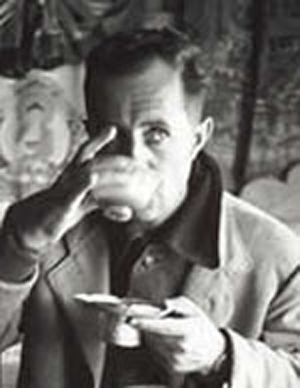
Tucci drinking butter tea in Tibet. Photo by Fosco Maraini.
Giuseppe Tucci (Italian pronunciation: [dʒuˈzɛppe ˈtuttʃi]; 5 June 1894 – 5 April 1984) was an Italian Orientalist, Indologist and scholar of East Asian studies, specialised in Tibetan culture and history of Buddhism. During its zenith, Tucci was a supporter of Italian Fascism, and he used idealized portrayals of Asian traditions to support Italian ideological campaigns. Tucci was fluent in several European languages, Sanskrit, Bengali, Pali, Prakrit, Chinese and Tibetan and he taught at the University of Rome La Sapienza until his death. He is considered one of the founders of the field of Buddhist Studies.
Life and work
Education and background
He was born to a middle-class south Italian family (Apulian) in Macerata, Marche, and thrived academically. He taught himself Hebrew, Chinese and Sanskrit before even going to university and in 1911, aged only 18, he published a collection of Latin insciptions in the prestigious Zeitschrift des Deutschen Archäologischen Instituts. He completed his studies at the University of Rome in 1919, where his studies were repeatedly interrupted as a result of World War I.
After graduating, he traveled to India and settled down at the Visva-Bharati University, founded by the Bengali poet and Nobel Laureate, Rabindranath Tagore. There he studied Buddhism, Tibetan and Bengali, and also taught Italian and Chinese. He also studied and taught at Dhaka University, the University of Benares and Calcutta University. He remained in India until 1931, when he returned to Italy.
Scholarship and reputation
He was Italy's foremost scholar of the East, with such diverse research interests ranging from ancient Iranian religion to Indian and Chinese philosophy. He taught primarily at the University of Rome but was a visiting scholar at institutions throughout Europe and Asia. In 1931, the University of Naples "L'Orientale" made him its first Chair of Chinese Language and Literature. In 1933 he promoted the foundation the Italian Institute for the Middle and Far East [it] - IsMEO (Istituto italiano per il Medio ed Estremo Oriente), based in Rome. The IsMEO was established as a "Moral body directly depending on Mussolini".[1] Until 1945, when the IsMEO was closed, Gentile was its President and Tucci was its Managing Vice-President and, later, Director of the courses of languages.
Tucci officially visited Japan for the first time in November 1936, and remained there for over two months until January 1937, when he attended at the opening of the Italian-Japanese Institute (Istituto Italo-nipponico) in Tokyo.[2] Tucci traveled all over Japan giving lectures on Tibet and "racial purity".[3]
He organised several pioneering archaeological digs throughout Asia, such as in Swat in Pakistan, Ghazni in Afghanistan, Persepolis in Iran and in the Himalayas. He was also the promoter of the National Museum of Oriental Art. In 1978 he received the Jawaharlal Nehru Award for International Understanding,[4] in 1979 the Balzan Prize for History (ex aequo with Ernest Labrousse). During the course of his life, he wrote over 360 books and articles.
Politics
Tucci was a supporter of Italian Fascism and Benito Mussolini.[3] His activity under Il Duce started with Giovanni Gentile, at the time Professor of the History of Philosophy at the University of Rome and already close friend and collaborator of Mussolini, when Tucci was studying at the university of Rome, and went on until the Gentile killing, and the compulsory administration of IsMEO for over two years until 1947.[5] In November 1936 - January 1937 he was the representative of Mussolini in Japan, where he was sent to improve the diplomatic relations between Italy and Japan and to make Fascist propaganda. On 27 April 1937 he gave a speech on the radio in Japanese on Mussolini's behalf.[6] In this country his strong and tireless action paved the way to the inclusion of Italy to the Anti-Comintern Pact (6 November 1937).[7] He wrote popular articles for the Italian state that decried the rationalism of industrialized 1930s-1940s Europe and yearned for an authentic existence in touch with nature, that he claimed could be found in Asia.[8] According to Tibetologist Donald S. Lopez, "For Tucci, Tibet was an ecological paradise and timeless utopia into which industrialized Europe figuratively could escape and find peace, a cure for western ills, and from which Europe could find its own pristine past to which to return."[9]
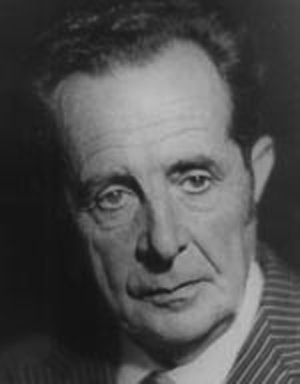
Death
Tucci died in San Polo dei Cavalieri, near Rome, in 1984.[10]
Biography
The only biography on Tucci is by Enrica Garzilli, L'esploratore del Duce. Le avventure di Giuseppe Tucci e la politica italiana in Oriente da Mussolini a Andreotti. Con il carteggio di Giulio Andreotti, Roma/Milano: Memori, Asiatica, 2012 (3rd ed. 2014), 2 vols.; vol. 1, pp. lii+685, ISBN 978-8890022654; vol. 2, pp. xiv + 724 ISBN 978-8890022661.
Selected bibliography
• Indo-tibetica 1: Mc'od rten e ts'a ts'a nel Tibet indiano ed occidentale: contributo allo studio dell'arte religiosa tibetana e del suo significato, Roma, Reale Accademia d'Italia, 1932 (Chinese transl.:《梵天佛地 1: 西北印度和西藏西部的塔和擦擦——试论藏族宗教艺术及其意义》, 魏正中 萨尔吉 主编. 上海, 上海古籍出版社, 2009);
• Indo-tibetica 2: Rin c'en bzan po e la rinascita del buddhismo nel Tibet intorno al Mille, Roma, Reale Accademia d'Italia, 1933 (English transl.: Rin-chen-bzan-po and the renaissance of Buddhism in Tibet around the millennium, New Delhi, Aditya Prakashan, [1988]; Chinese transl.:《梵天佛地 2: 仁钦桑波及公元1000年左右藏传佛教的复兴》, 魏正中 萨尔吉 主编. 上海, 上海古籍出版社, 2009);
• (with E. Ghersi) Cronaca della missione scientifica Tucci nel Tibet occidentale (1933), Roma, Reale Accademia d'Italia, 1934 (English transl.: Secrets of Tibet. Being the chronicle of the Tucci Scientific Expedition to Western Tibet, 1933, London & Glasgow, Blackie & Son, 1935);
• Indo-tibetica 3 : I templi del Tibet occidentale e il loro simbolismo artistico, 2 vols, Roma, Reale Accademia d'Italia, 1935-1936 (Chinese transl.:《梵天佛地 3: 西藏西部的寺院及其艺术象征》, 魏正中 萨尔吉 主编. 上海, 上海古籍出版社, 2009);
• Santi e briganti nel Tibet ignoto: diario della spedizione nel Tibet occidentale 1935, Milano, U. Hoepli, 1937;
• Indo-tibetica 4: Gyantse ed i suoi monasteri, 3 vols, Roma, Reale Accademia d'Italia, 1941 (English transl.: Gyantse and its monasteries, New Delhi, Aditya Prakashan, 1989; Chinese transl.:《梵天佛地 4: 江孜及其寺院》, 魏正中 萨尔吉 主编. 上海, 上海古籍出版社, 2009);
• Asia religiosa, Roma, Partenia, 1946;
• Tibetan Painted Scrolls, 3 vols, Roma, Istituto Poligrafico e Zecca dello Stato, 1949;
• Teoria e pratica del Mandala, Roma, Astrolabio, 1949 (English transl.: The theory and practice of the Mandala, London, Rider and Co., 1961);
• Italia e Oriente, Milano, Garzanti, 1949;
• Tibetan folksongs from the district of Gyantse, Ascona, Artibus Asiae, 1949; 2nd rev. ed. 1966;
• The Tombs of the Tibetan Kings, Roma, IsMEO, 1950;
• A Lhasa e oltre, Roma, La Libreria dello Stato, 1950 (English transl.: To Lhasa and beyond, Roma, La Libreria dello Stato, 1956);
• Tra giungle e pagode, Roma, La Libreria dello Stato, 1953;
• Preliminary report on two scientific expeditions in Nepal, Roma, IsMEO, 1956;
• Storia della filosofia indiana, Bari, Laterza, 1957;
• Nepal: alla scoperta dei Malla, Bari, Leonardo da Vinci, 1960 (English transl.: Nepal. The discovery of the Malla, London, George Allen & Unwin, 1962);
• Die Religionen Tibets in G. Tucci and W. Heissig, Die Religionen Tibets und der Mongolei, Stuttgart, W. Kohlhammer, 1970 (English transl.: The religions of Tibet, London, Routledge & Kegan Paul, 1980).
• " Tibet. Land of Snows" Translated by J. E. Stapleton Driver. Oxford & IBH PublishingCo., Calcutta. Bombay. New Delhi.
Footnotes
1. On the foundation of IsMEO until 1947, when it was re-opened after its compulsory administration, see Enrica Garzilli, L'esploratore del Duce. Le avventure di Giuseppe Tucci e la politica italiana in Oriente da Mussolini a Andreotti. Con il carteggio di Giulio Andreotti, 2 Vols., Memori /Asiatica Association, Vol. 1, pp. 355-493. ISBN 978-8890022654
2. {{The newsreel Giornale Luce B1079, 21 April 1937, on the opening entitled Giappone Tokyo. L'Istituto Italo-Nipponico, produced by Asahi and distributed in the Italian Cinemas, can be viewed at the site of Istituto Luce in Rome url=http://www.archivioluce.com/archivio/}}
3. "Fosco Maraini". Obituaries. The Independent. 19 June 2004. Retrieved 25 September 2010. On Tucci's mission in Japan and the related diplomatic documents see Enrica Garzilli, L'esploratore del Duce. Le avventure di Giuseppe Tucci e la politica italiana in Oriente da Mussolini a Andreotti. Con il carteggio di Giulio Andreotti, 2 Vols., Memori/Asiatica Association, Rome, Milan, 2012, Vol. 1, pp. 401-418.
4. "List of the recipients of the Jawaharlal Nehru Award". ICCR website.
5. See Enrica Garzilli, L'esploratore del Duce. Le avventure di Giuseppe Tucci e la politica italiana in Oriente da Mussolini a Andreotti. Con il carteggio di Giulio Andreotti, 2 Vols., Memori/ Asiatica: Rome and Milan, 2012, Vol. 1, Chaps. 2-6; Vol. 2, Chap. 8.
6. Reported in the newspaper Il Messaggero of 27 April 1937. See Enrica Garzilli, L'esploratore del Duce. Le avventure di Giuseppe Tucci e la politica italiana in Oriente da Mussolini a Andreotti. Con il carteggio di Giulio Andreotti, 2 Vols., Memori/ Asiatica: Rome and Milan, 2012, Vol. 1, p. 405 ISBN 978-8890022654.
7. On Tucci's collaboration with Fascism see Enrica Garzilli, L'esploratore del Duce, cit., Vol. 1, pp. 283-493; Vol. 2, pp. 5-82 et passim. On Tucci's mission in Japan, idem, Vol. 1, pp. 387-413 ISBN 978-8890022661.
8. Clarke, John James (1997). Oriental enlightenment: the encounter between Asian and Western thought. Psychology Press. p. 196. ISBN 978-0-415-13376-0.
9. Mullen, Eve (2001). The American occupation of Tibetan Buddhism: Tibetans and their American hosts in New York City. Jugend, Religion, Unterricht. 6. Waxmann Verlag. p. 94. ISBN 978-3-8309-1053-4.
10. Brooks, E Bruce. "Sinological Profiles - Giuseppe Tucci". University of Massachusetts. Retrieved 27 June 2018.
References
• Federico Chitarin, "Le imprese di Giuseppe Tucci, l'Indiana Jones di Mussolini", in Memori Mese-Mensile, October 2012.
• Alice Crisanti, "Il memoriale di Giuseppe Tucci", Quaderni di storia 81 (2015), pp. 267–75.
• Enrica Garzilli, L'esploratore del Duce. Le avventure di Giuseppe Tucci e la politica italiana in Oriente da Mussolini a Andreotti. Con il carteggio di Giulio Andreotti, Roma/Milano: Memori, Asiatica, 2012 (3rd ed. 2014), 2 vols.; vol. 1, pp. lii+685, ISBN 978-8890022654; vol. 2, pp. xiv + 724 ISBN 978-8890022661.
• Enrica Garzilli, Mussolini's Explorer: The Adventures of Giuseppe Tucci and Italian Policy in the Orient from Mussolini to Andreotti. With the Correspondence of Giulio Andreotti (Volume 1), (riv. and enlarged version of the first 2 chapters of L'esploratore del Duce. Le avventure di Giuseppe Tucci.., cit.), Milano: Asiatica, 2016, pp. liii+332, ISBN 978-8890022692.
• Enrica Garzilli, "Un grande maceratese che andò lontano: Giuseppe Tucci, le Marche e l'Oriente / A Great Man from Macerata Who Went Far: Giuseppe Tucci, the Marches Region and the East" English version and Italian version, in Identità Sibillina, Year 2006 -n. 2.
• Enrica Garzilli "L’esploratore dell’Oriente: Giuseppe Tucci", in Il Sole 24 Ore-Ispirazione, 15 Nov. 2007.
• Enrica Garzilli, "Giuseppe Tucci: l’Indiana Jones italiano", in L’Illustrazione italiana, Year 3, N. 1, pp. 84–86.
• Enrica Garzilli, "Giuseppe Tucci, l’orientalista italiano diventato una leggenda: una sola passione, l’Asia", in EUR. La città nella città, 22 July 2010.
• Enrica Garzilli, "L'esploratore dell'Oriente: Giuseppe Tucci", in Il Sole 24 Ore-Ispirazione, 15 Nov. 2011.
• Enrica Garzilli, "A Sanskrit Letter Written by Sylvain Lévi in 1923 to Hemarāja Śarmā Along With Some Hitherto Unknown Biographical Notes (Cultural Nationalism and Internationalism in the First Half of the 21st Cent.: Famous Indologists Write to the Raj Guru of Nepal – no. 1)" in Commemorative Volume for 30 Years of the Nepal-German Manuscript Preservation Project, Journal of the Nepal Research Centre, vol. 12 (Kathmandu, 2001), ed. by A. Wezler in collaboration with H. Haffner, A. Michaels, B. Kölver, M. R. Pant and D. Jackson, pp. 115–149 (on Tucci's guru, the Nepalese Hemarāja Śarmā).
• Enrica Garzilli, "A Sanskrit Letter Written by Sylvain Lévy in 1925 to Hemarāja Śarmā along with Some Hitherto Unknown Biographical Notes (Cultural Nationalism and Internationalism in the First Half of the 20th Century – Famous Indologists write to the Raj Guru of Nepal – No. 2)", in History of Indological Studies. Papers of the 12th World Sanskrit Conference Vol. 11.2, ed. by K. Karttunen, P. Koskikallio and A. Parpola, Motilal Banarsidass and University of Helsinki, Delhi 2015, pp. 17-53.
• Raniero Gnoli, Ricordo di Giuseppe Tucci, Roma, IsMEO, 1985;
• Giuseppe Tucci: Commemorazione tenuta dal Presidente dell'Istituto Gherardo Gnoli il 7 maggio 1984 a Palazzo Brancaccio, Roma, IsMEO, 1984;
• Giuseppe Tucci nel centenario della nascita : Roma, 7-8 giugno 1994, a cura di Beniamino Melasecchi, Roma, IsMEO, 1995;
• Giuseppe Tucci : Un maceratese nelle terre sacre dell'Oriente, Macerata, Comune di Macerata, 2000;
• Tucci l'esploratore dell'anima, Catalogue of the Exhibition, Pollenza, Arte Nomade, 2004 (in Italian and English);
• "Concetto Guttuso intervistato da Oscar Nalesini", Il Giornale del Museo Nazionale d'Arte Orientale, n. 3, 2008, pp. 7–8 (sul viaggio in Nepal del 1952), now also on-line [1];
• Hans Thomas Hakl, "Giuseppe Tucci entre études orientales, ésoterisme et Fascisme (1894–1984)", Politica Hermetica Nr. 18, Lausanne, L’Age d’Homme, 2004, p. 119–136.
• Oscar Nalesini, "Assembling loose pages, gathering fragments of the past: Giuseppe Tucci and his wanderings throughout Tibet and the Himalayas, 1926-1954", in Sanskrit Texts from Giuseppe Tucci's Collection Part I, Ed. by F. Sferra, Roma, IsIAO, 2008, pp. 79–112 (Manuscripta buddhica, 1);
• Oscar Nalesini, "Ghersi e gli altri. I fotografi delle spedizioni Tucci". In Eugenio Ghersi, un marinaio ligure in Tibet, a cura di D. Bellatalla, C. A. Gemignani, L. Rossi. Genova, SAGEP, 2008, pp. 53–60;
• Oscar Nalesini, "A short history of the Tibetan explorations of Giuseppe Tucci", in Visibilia invisibilium. Non-invasive analyses on Tibetan paintings from the Tucci expeditions, ed. by M. Laurenzi Tabasso. M.A. Polichetti, C. Seccaroni. Orientalis Publications, 2011, pp. 17–28;
• Oscar Nalesini, "Il carteggio Moise-Tucci sulla spedizione tibetana del 1948 (The Moise-Tucci correspondence on the Tibetan expedition of 1948)", in Miscellanea di storia delle esplorazioni 37 (2012), pp. 115–61;
• O. Nalesini, "Felice Boffa Ballaran, diarista, fotografo e cartografo della spedizione italiana in Tibet del 1939", in Miscellanea di storia delle esplorazioni 38 (2013), pp. 267–309.
External links
• Il Duce's Explorer. The Adventures of Giuseppe Tucci. Blog in English including unedited documents such as his letters to Mussolini, to the Royal Preceptor of Nepal and to Giulio Andreotti, and documents on his relationship with Gandhi, Tagore, Giovanni Gentile, Karl Houshofer, Mircea Eliade, and so on.
• Giuseppe Tucci: Life, Travels and Adventures of the Explorer of Fascism: Blog in Italian including unedited documents such as his letters to Mussolini, to the Royal Preceptor of Nepal and to Giulio Andreotti, and documents on his relationship with Gandhi, Tagore, Giovanni Gentile, Karl Houshofer, Mircea Eliade, and so on.
• Giuseppe Tucci: Life and Works, Explorations, Digital library, Photographic archives, Texts' collections at the Wayback Machine (archived 18 June 2012)
• A Great Man from Macerata Who Went Far: Giuseppe Tucci - the Marches Region and the East
• Images of Earth and Water: The Tsa-Tsa Votive Tablets of Tibet - Giuseppe Tucci and Stupa Symbolism
• Giuseppe Tucci: A Sketch of Indian Materialism
• Giuseppe Tucci. Facebook page.
• Il Duce's Explorer. Facebook page (in English)
• Giuseppe Tucci l'esploratore del Duce. Facebook page (in Italian)

